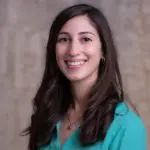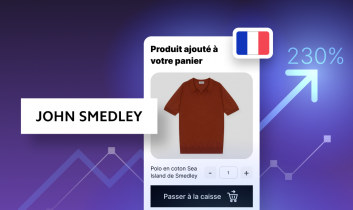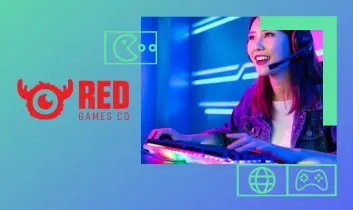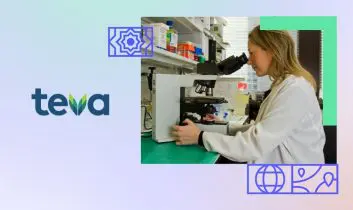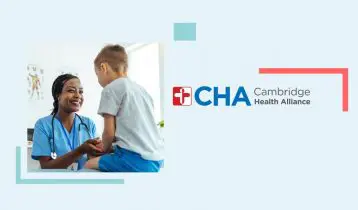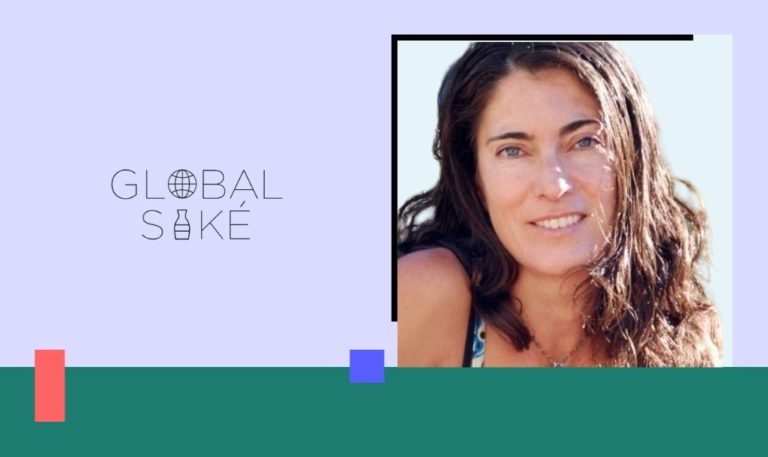
Localization Leaders: Meet Talia Baruch, GlobalSaké Founder & L10n Consultant
This month we sat down with Talia Baruch, an independent global-ready growth and localization consultant, Founder of Yewser and GlobalSaké. From working at major LSPs like Lionbridge and Translations.com, to leading international product management at Google, LinkedIn, and SurveyMonkey, to starting her own ventures, Talia has done it all, and has unique, rounded, cross-functional insights from all sides of the localization industry.
Hi Talia, thanks for meeting with us! I want to start out with your career journey, what have you done throughout the years?
Thanks for having me! I actually came to localization from the content side decades ago. Early on in my career, I started off as a translator/transcreator of literary creative content, transadapting off-Broadway shows and poetry. 23+ years ago, I was living in San Diego with my family and stumbled upon the concept of localization. It was early days for the localization industry. I began working as a localization manager on the LSP side at a small agency in San Diego. Then I moved to San Francisco and started working at Lionbridge as a Localization Manager for five years, and then moved on to Translations.com. So, I was on the LSP side for about a decade, and then I spent the next 13+ years on the client side, pivoting to Product & Growth. I worked at Google (Maps and Earth products), then headed International Product at LinkedIn and Survey Monkey. The constant thread in my career path has always been focusing on the international customer segments–understanding them within the cultural context of their regional environments, and weaving in these nuance factors into the product experience, optimizing discoverability in new markets, customer acquisition, core engagement, conversion to paid and brand loyalty retention.
I’ve always been fascinated with understanding the expected consumer behavior in different markets, observing the cultural and regional nuance differences in markets on different ends of the cultural code spectrum, like Japan and Israel; Germany and Brazil, etc. From adapting content to international markets, I pivoted to adapting product performance to maximize product-led-growth adoption in new markets.
International product management is fundamentally a horizontal and cross-functional effort. When I created MVP rollout roadmap plans for the global product growth vision, I had to apply a wide-lens, big-picture vision, aligned to the corporate core objectives and to all functional stakeholder leads across the organization. My PRDs (product requirement docs) had to include action item initiatives for other teams, like business development—e.g, integrating the relevant local APIs tied to the local ecosystem of providers, and forming the right strategic partnerships in-country; with marketing – repositioning our value proposition to effectively resonate with our local addressable segments, and creating local campaigns vs translating/localizing domestic campaigns for our international markets. My PRDs needed to include the local regulatory compliances (tied to the Legal team), the relevant price plans and payments per region (tied to the Payments team), etc.
I would say that the most challenging part of my role was to slowly, gradually, drive a shift in the organizational mindset, from “global-standard” one-size-fits-all product dev/design with international as an afterthought, to a “global-ready-first” strategic mindset in product, process and people.
So, you were really the first person to take on this kind of role and really understand what it entails at both companies?
Yes, both at Linkedin and SurveyMonkey, I was initially hired as an IC (individual contributor) to lead international product growth, and later grew a cross-functional support team. I was in the Product/Growth org structure (localization was in a different org team). At the time (and in many cases still today), companies had a narrower perception of what localization is—still today localization is often seen as a production language support effort vs as a strategic, cross-functional global growth engine.
In the early days, companies would typically outsource production, and keep a localization PM + LQA in-house. Later, with company maturity, they would hire a full in-house localization team, but it’s still very much positioned as a language support effort at the tail end of the product development and design process.
At the time (and in many cases still today), companies had a narrower perception of what localization is—still today localization is often seen as a production language support effort vs as a strategic, cross-functional global growth engine.
My role, leading international growth within the product organization, gave me visibility to the corporate core objectives and influence positioning across the stakeholder functional teams. At SurveyMonkey, I actually owned the codebase for all logged-out product state and the A/B testing platform, so I extensively experimented core funnel feature optimizations based on user geolocation, language interface, and other international usability factors.
Silicon Valley tech companies are very data-driven, and so that data was a critical tool in my internal evangelism education, and an effective directive to inform us on the priority implementations for product geo-fit (a term I’ve coined). Through hundreds of A/B test experimentations, I was able to move the needle in our product-led growth efforts that had a significant impact on the business bottom line. Many companies leave a load of money on the table simply because they don’t optimize downstream pricing through checkout to completed orders funnel by geo, or top-of-funnel discoverability in high-intent channels (ISEO/SEM).
There’s certainly no need to adapt the product experience for every market, but there are some high-impact optimizations on core funnels for specific countries/regions. Tracking country-level data (implicit and explicit user signals) is very important. For example, tracking how many people who’ve visited pricing page proceed to the first step of checkout, and how many of them actually complete a transaction successfully (looking at both voluntary and involuntary churn). If you look at the US as the benchmark, then compare that data to other English core markets–UK, CA, AU–and then to Germany, France, and Spain, for example, you’ll always see significant performance gaps. From there, you can start diving into how many of those were voluntary churn, e.g. people dropping off because you didn’t provide the right trust elements on the page, or the right price plans/payment options in-country; versus involuntary churn, when your consumers wanted to pay you, but their payment processing did not go through because you didn’t enable retry and reacquire with a local processor.
So at some point you moved more into education and consulting, and founded GlobalSaké. Tell us more about that.
In 2017, I decided to leave corporate America. I saw that no one actually trains the next generation of leaders to think broadly about global-ready product development/design. Some universities teach localization or international relations, but I didn’t see programs dedicated to teaching international product strategy and how to integrate cultural and regional factors in the business plan. So, I built that curriculum, pitched it to several universities, and have been teaching it at the Executive MBA Programs in several business schools – San Francisco State University, at Hult International Business School, and at CEDIM—a design graduate school in Mexico City.
In parallel, I cofounded GlobalSaké as a corporate education program, creating a global community of cross-functional leads driving international expansion. I basically leveraged my university curriculum and created the ParalmINT 2021 as a series of monthly virtual events, split into 12 modules, each dedicated to the international enablement for a specific function in the organization. For example, international UI/UX design, user research for international segments, or global payments. In 2021, GlobalSaké has become my full-time occupation, but I still offer consulting for tech companies, helping them scale their international expansion with product-led growth. I offer International Product as a Service, running product audits tracking the full unique user journey and creating the PRDs for product global readiness (resolving all infrastructural tech debts + full internationalization), and optimizing core funnels for geo-fit.
What do you feel were your biggest challenges when moving from LSPs into in-house roles in tech, and then moving from tech into consulting and working for yourself?
Every environment has its pluses and minuses. On the LSP side, the big plus was that I was surrounded by people who got it. It’s also a more laid-back environment, with a more family-style, nurturing culture. On the client-side, in Silicon Valley’s tech industry, it’s a very different pace. In product, the expectation was to launch a new feature every quarter with firm deadlines and functional dependencies, aligned OKRs.
It was a harder battle on the client-side, evangelizing for our international customers. Most of my counterpart leads in other functional teams didn’t come from international orientation disciplines, but were open to learning more about it and trusted my direction, which resulted in meaningful collaborations and effective impact results for the business. The biggest friction-point challenge was reporting under an executive who did not understand the cultural and regional nuance in product performance and who lacked the leadership to empower the people who did. However, through perseverance, dedicated commitment to the cause, and forward-thinking allies, my team was able to bring positive change.
What I most miss as a consultant is working on a team. The social and collaborative aspects of the daily work life are what I miss the most. When people come together across cultures, functions, and borders, leveraging their diverse perspectives and expertise, that’s when meaningful solutions to complicated problems happen. And that’s worth getting out of bed for every morning!
At my GlobalSaké venture, I do have the privilege of working with our fantastic team of experts. And I do love the freedom of owning my time, being able to decide which projects I’d like to take on and which ones to pass on.
We talked a bit about how you decided to start GlobalSaké. What’s the overall mission of these events and this initiative?
GlobalSaké is about changing the paradigm in our industry and expanding the lens on localization, bringing it to a more strategic, holistic, cross-functional level. There’s so much readily accessible information out there today. And there are so many localization events. In most of the localization events, the vast majority of the attendees are translation companies and LSPs. You meet your industry peers and colleagues, and you build relationships and collaborations. And it’s great. But you’re kind of preaching to the choir, because everyone there gets what you’re talking about.
My vision with GlobalSaké was not to introduce yet another industry program and information resource. I wanted to focus on a different audience—the client-side executive decision-makers who are responsible for driving global growth, but who don’t necessarily come from localization or international product-led growth orientation in their career paths. These are excellent, skilled leaders, and our goal is to help them reach their targets in the most efficient way.
I’ve designed the GlobalSaké program in a format that invites rounded-perspective industry insights. In every event, we have speakers representing the multi-functional facets of that topic and representing diverse maturity level companies (from startups, scale-ups, and multinational corporations), as well as companies based in different geos and their inbound and outbound international expansion stories.
The GlobalSaké program also helps LSPs grow their service suite beyond language support as a production line and start engaging with client-side cross-functional leads on more strategic bigger-impact international efforts. GlobalSaké’s goal is to create that broader awareness both on the LSP side and on the client side.
What advice would you give to people in the industry who want to go out on their own and be consultants?
You’re doing the company a disservice if you’re only solving the problem from a narrow, short-term perspective.
Being an advisor/consultant is a lot of responsibility. First, know that it takes time to build clientele. Once people start coming to you, it’s your responsibility to help them solve core problems. Often, they come to you with the wrong problem diagnosis, and you’ll need to discover, with them, the core gaps and priority solutions that best fit their use-case scenario. The main advice I have is to really listen and read between the lines, hear what they’re not telling you. Don’t just communicate with the primary point of contact, who may have a blindside to the corporate core objectives. Whatever the project scope is, I always ask to speak to other key stakeholder leads who define and measure success because I want to identify the respective gaps and goal perspectives from the different leads representing different functional KPIs. You’re doing the company a disservice if you’re only solving the problem from a narrow, short-term perspective.
For example, if a company says they want to optimize the checkout flow in Germany, what I want to know is, what is the end goal beyond that? The short-term KPI goal is to increase completed orders in Germany, but what is company’s long-term growth vision in Germany and why did they prioritize that market? I always ask them to consider what big-picture problem they’re trying to solve as a company, then break it down. Who are you optimizing the solution for? Is this segment different in your different international markets? What do they care about? The “what” and the “who” dictate how you define and measure success. If the success metrics are wrong, then you’re chasing the wrong sun. When you ask these questions to different stakeholders from different functions, you get different answers. Your job is to help them align forces to maximize their resources and budgets more effectively toward that common end goal.
Check out GlobalSake’s grand finale year-end event on Dec 9 themed “Travel the World”! Find the program info here and use promo code GS20 to get 20% off when you register by Nov 25.
Need fast, high-quality translation?
Translate nowWhat our customers are saying

